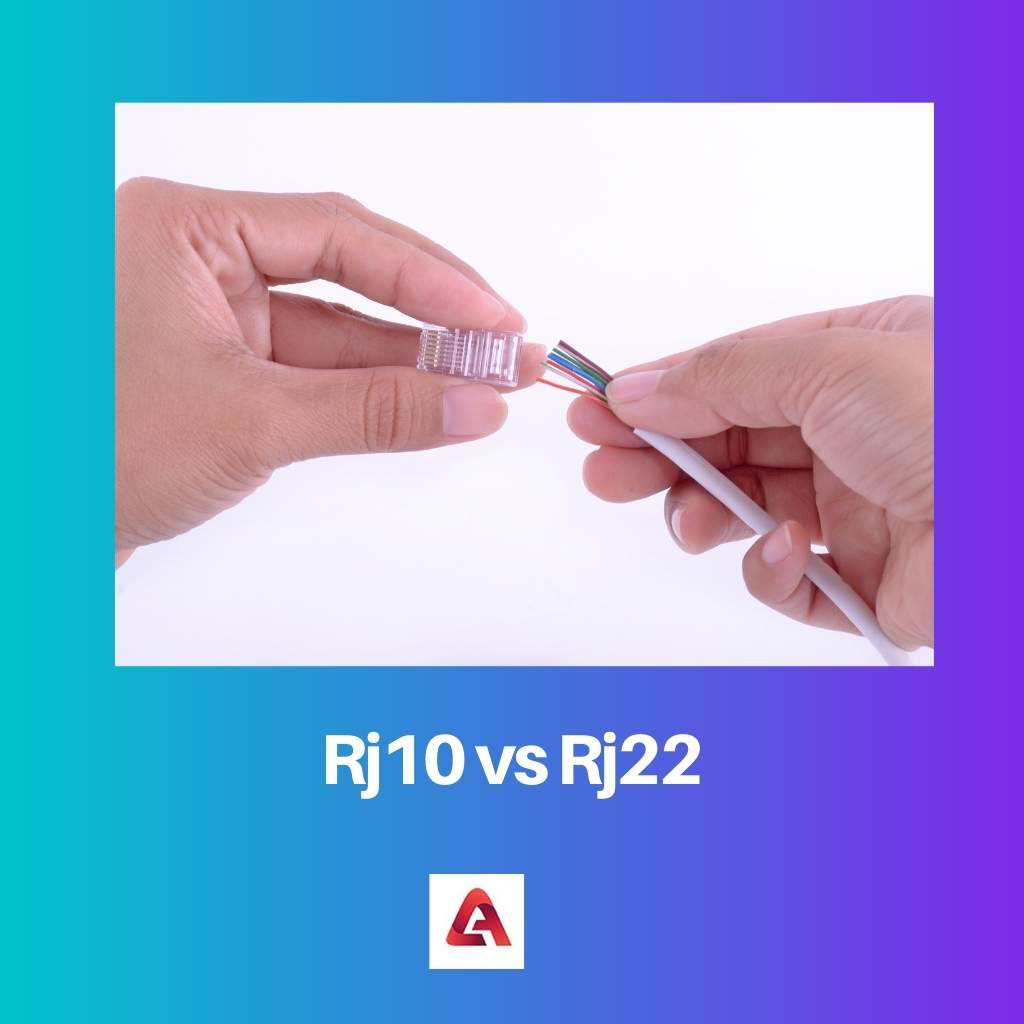Even though they provide Ethernet services, they require wire connectors or Registered Jacks, which come in various configurations and are commonly used in telecommunication exchange companies.
Key Takeaways
- RJ10 connectors have four conductors and are primarily used for telephone handsets.
- RJ22 connectors also have four conductors but are smaller and used in headsets or smaller devices.
- Both connectors have similar functions but differ in size and specific applications.
Rj10 vs Rj22
RJ10, or registered jack 10, is a telecommunication network interface with a 6P4C and 6P2C layout that can handle two or four wires. RJ22 is a modulator used to connect electrical appliance wires to audio headsets, telecommunication and networks. It has a 4P4C layout, which can handle four wires.

For telecommunication businesses, it is a widely used registered jack. Except for the United States, Rj10 may be utilized for single-line telephony in many nations.
Rj22 has a 4P4C layout, which stands for 4 Positions and 4 Connectors. Rj22 is not a registered jack, although it is informally included. In telephone handsets, the Rj22 port is utilized.
Comparison Table
| Parameters of Comparison | Rj10 | Rj22 |
|---|---|---|
| Configuration | 6P4C and 6P2C are two different types of 6P4C. | 4P4C |
| Physical Characteristics | It’s a square-shaped gadget with a small footprint. | It’s a square-shaped gadget that’s tiny in size. |
| Used For | Telephone lines and modems contain them. | They can be found in phone handsets. |
| Number of wires | 6P4C has two different configurations. It can handle four wires at once, but the 6P2C can only retain two. | It can hold four wires at once. |
| Disadvantage | Only telephone handsets may be used with it. | It isn’t suitable for high-speed transmissions. |
What is Rj10?
Rj10 is a trademarked jack that was developed in the 1970s in the United States. These registered jacks aim to connect a voice or data equipment item to a long-distance carrier. It is the most used registered jack.
The device with the 6P4C configuration can concurrently handle four wires, but the device with the 6P2C design can only run two wires at a time.
The benefit of using Rj10 is that it has a dual setup, and the device’s body is constructed of plastic, making it more robust and straightforward to use.
What is Rj22?
Rj22 is a modulator, not a jack, that connects cables and wires of other electrical appliances in computer networking, telecommunications, and audio headsets.
It has four positions and four connections, according to the decoded meaning.
This gadget can handle four cables at once. It does, however, have the restriction of just being used in telephone handsets.
Main Differences Between Rj10 and Rj22
- Rj22, on the other hand, is used to connect a telephone handset.
- Rj10 has the drawback of being unable to handle large transmissions, whilst Rj22 can only be used for a telephone handset.
- https://jvi.asm.org/content/jvi/early/2008/06/11/JVI.00310-08.full.pdf
- https://journals.asm.org/doi/abs/10.1128/JCM.41.9.4471-4474.2003

We ought to know about these connectors. They are crucial for communication and proper functioning. I’m grateful for such a detailed analysis, even if it’s a bit technical.
Whilst the article provides a good understanding of the differences between Rj10 and Rj22, I believe that the naming conventions could have been better explained.
The article is quite comprehensive. However, it lacks a discussion around the cost and availability of these connectors in the market.
This article is so informative, it’s impressive how well explained it is. I truly hope to read more like this in the future.
The comparison table is excellent. It provides valuable insight into the differences between Rj10 and Rj22. As someone interested in technology, I found this very helpful.
The references provided are a valuable addition to the article and allow readers to dig deeper into the topic if they’re interested. These scientific articles are always welcome.
I’ve never seen an article on this topic before, and as a technology enthusiast, I must say it’s excellent. Thank you!
This is the kind of piece that I appreciate. It’s scientifically grounded and provides substantial knowledge about an otherwise overlooked subject.